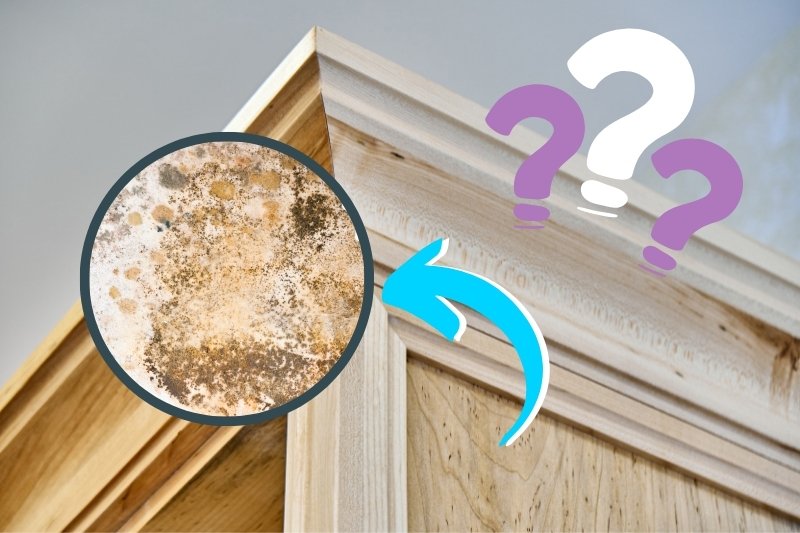If you’ve found some patches of mould on your furniture, you might be wondering why the mould hasn’t spread from your infected furniture onto an adjacent wall. After all, mould loves to spread itself around a home.
Put your mind at rest right now by finding out why there’s mould on your furniture, but not on your walls below.
There are three main reasons why mould forms on your furniture:
- There’s too much moisture in the air
- There isn’t sufficient airflow in your home
- The furniture is damp
Below I’ll go into more detail about these reasons, and I’ll give you some extra food for thought.
Moisture in the Air
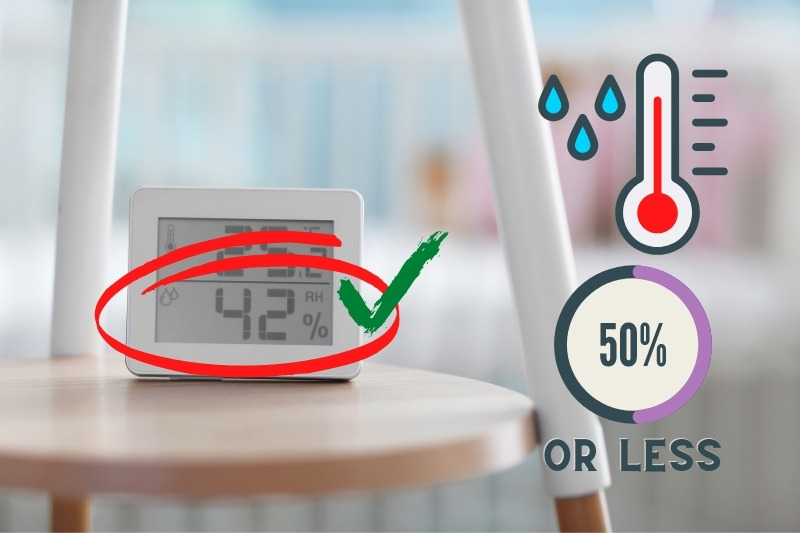
The most likely culprit for your mouldy problem is that there is too much moisture in your home.
Moisture can come from anywhere, for example, not covering saucepans when cooking, leaving the bathroom door open when showering, leaving wet clothes on the floor and even breathing during the night.
Anything can contribute to the amount of moisture in your home, but the important thing is to manage the situation.
You can do this by covering pans when you cook, shutting the bathroom door, opening a window and using an extractor fan when showering, opening the bedroom window in the morning, wiping condensation off furniture and even by getting a humidity monitor.
The smallest of changes can help to limit the amount of moisture you have hanging around in your home. This, in turn, can prevent mould from growing because the environment isn’t right for it.
In addition to this, you should aim to keep your home’s humidity level at 50% or less as this should keep mould at bay!
Not Enough Ventilation in the Home

If there isn’t enough room for air to circulate in your house, mould usually puts in an appearance.
Think about it like this, if your home is packed tight with lots of stuff and your furniture is surrounded by lots of goodies, air will not be able to travel around as easily. The outcome of this is that furniture, bags, shoes and toys get covered in mould.
One way you can help air to circulate in the home is to declutter the house of unwanted items. Additionally, you should leave enough space between items, and you shouldn’t push furniture up against walls – always leave a gap of an inch or two at a minimum.
Furniture May Be Damp

If mould is growing on your furniture but not on your walls, your items may be damp to begin with.
While you’d like to think that you’d notice wet patches on your furniture, this isn’t always the case. Here are some examples of how your furniture may have become damp:
Furniture has been in storage
If your furniture has been in storage for a while your items might have become a little damp and cold. This might lead to a mould patch forming on an item. If you don’t notice the mark when you move the furniture back into your home, the issue is likely to get worse, and the mould might spread itself onto other items of furniture in your house.
Pets have been sitting on furniture
Furniture may become damp if you allow wet pets to sit on your items. The furniture will absorb the liquid from your pets and the material will hold onto the moisture. If you don’t dry the furniture, it’ll become moisture-ridden and mould will start to form because this is the ideal environment for it to grow in.
Spilt food or drink
Someone may have had a little accident and didn’t tell you. If you don’t treat wet patches, they’re just going to stay wet, and they’ll dry very slowly. During this time mould will start to set up camp. In addition to this, you should mop up food and drink spills because they’ll become smelly.
Condensation
Condensation may be playing its part. If your furniture is near to where you cook, your items may be absorbing the condensation that’s being created in the kitchen, for example.
Wet coats or shoes
If you store wet goods in or on your furniture this extra moisture is going to start causing problems. For example, if you hang a wet coat up on a wooden unit or if you put cold damp shoes in a cupboard. The likelihood is that you won’t return to clean or wipe down the furniture, and you’ll probably keep repeating this exercise. So, your furniture will constantly be exposed to unwanted moisture.
You should try and find out why your furniture is damp, and then you can treat the items in an appropriate manner.
Other Reasons Why Mould Might Grow on Your Furniture
Mould is usually caused by too much moisture and by having poor airflow in a home. However, there are a couple more factors that you should think about.
You can find out more about them below.
The ideas below may not apply to all homes and some ideas may be a consequence of the reasons listed in the section above.
1. Poor insulation in the home
If you have an older house, it may not be insulated as well as a newer house. This means that the house will be a lot colder.
If your house is generally cold, you’ll notice that you’ll have a big problem with condensation forming on various surfaces in and around the home when you cook or shower, for example. This condensation is typically caused by hot air coming into contact with cold surfaces, for example, steam from a saucepan touching a cold wooden cabinet.
If this condensation doesn’t get cleared away it will become stagnant, and the moisture will naturally find its way into the air and mould will start to form on the furniture.
In addition to this, older homes that have poorer insulation often suffer from dampness. If you have a damp problem you may find a mould issue nearby. Insulating the home properly is usually the best solution here.
2. Untreated condensation in most homes
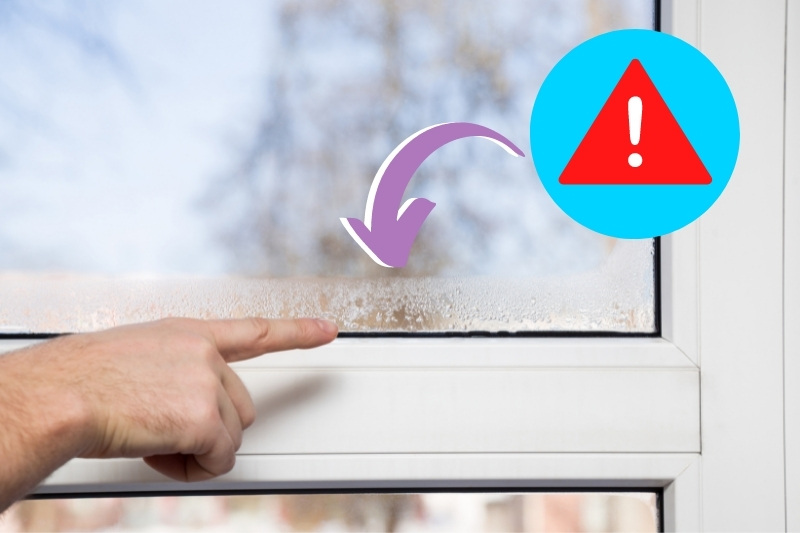
While poorly insulated homes often suffer with condensation related issues, it’s not uncommon for condensation to pop up in any kind of home, even new ones. It usually appears in this case on window panes as you’re cooking or drying clothes indoors, and on surfaces in the bathroom.
The main problem with condensation in this case is that it’s not wiped away. The condensation is usually ignored by homeowners, and as a direct consequence, the water just sits on a surface until it goes away by itself. Or in a lot of cases, the liquid runs off one surface and onto another surface – the second surface is typically some sort of furniture (cabinet/drawers).
This isn’t great for your home because you’re actively leaving moisture around the home, and this will get into the air eventually. This, in turn, is the perfect environment for mould to grow in, hence it starts to grow on your furniture.
If you see condensation on a window, for example, you should go and wipe the window down so it dries immediately. This prevents the water from just sitting there, or from running down the wall, and causing problems to your furniture.
Of course, using extractor fans and opening doors and windows helps, but if you can take it one step further by actually removing the water to start off with, you stand a better chance of preventing mould from forming.
3. Leaks/cracks around the home
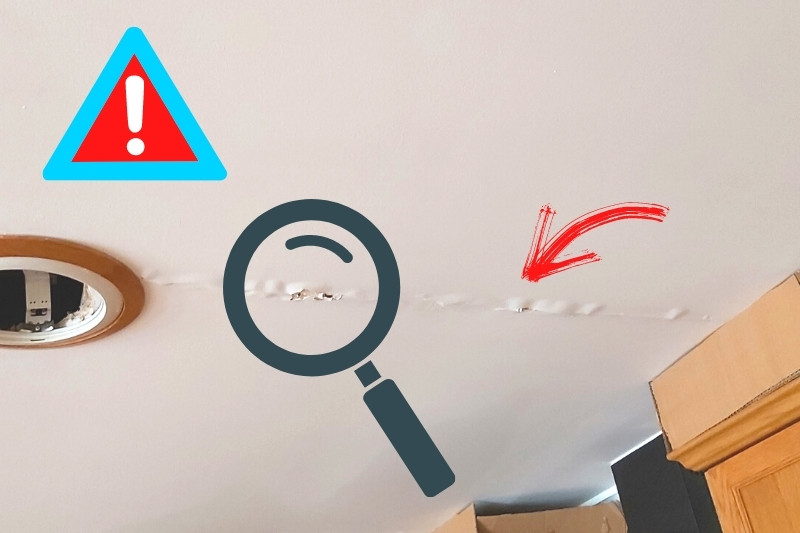
If you spot mould on your furniture, it could be a sign that there’s a leak somewhere in your home. If this is the case you need to find the source of the problem and fix it before it gets worse.
In addition to this, you may find that there are some small cracks in window seals around your home, particularly if your windows are a little older. These cracks may be allowing moisture into your house and this could be causing your mouldy issue. In this case, replacing the windows is the best option.
Tips to Limit the Spread of Mould in Your Home
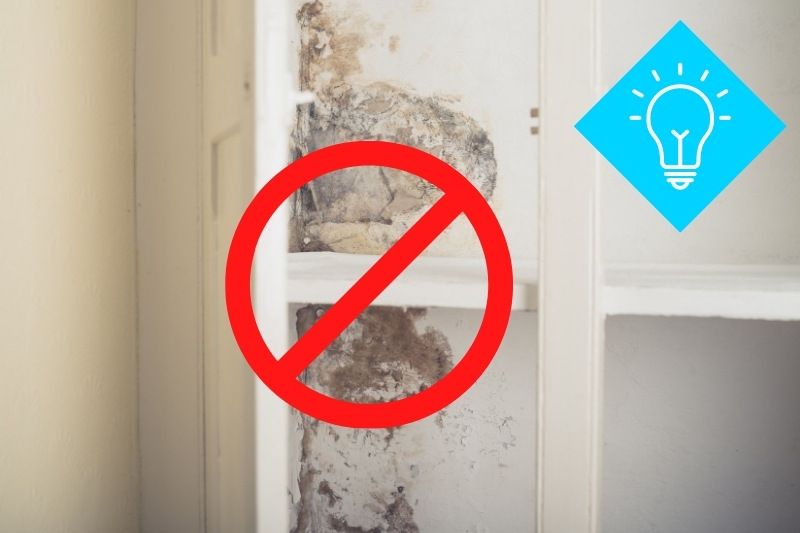
In an ideal world each and every home would be mould free, but that’s not really going to be the case. Mould has a funny old way of finding its way back into homes, and as much as you try to eradicate it once and for all, it may just keep coming back.
With this in mind, here are a few tips you can try to limit the spread of mould in your home:
- When you see mould forming, get rid of it as soon as possible! You can do this by using homemade remedies or by buying specialised mould cleaners. Don’t wait around for it to get worse.
- Fix obvious problems, like leaks or broken windows, so there’s no chance of moisture getting into your home.
- Clean your home regularly with products that are designed to kill mould. This will prevent issues from occurring in the first place.
- Keep your home well ventilated. You may even want to think about getting a dehumidifier for your house.
- Give your windows and doors a wipe down every day, so you remove the condensation that has started to form on them.
- Paint your walls in anti-mould paint every few years to keep the problem at bay.
- Keep your home at 50% or less humidity. This will help to limit mould growth and it will improve the air quality in the house too.
- Move your furniture away from outside walls. These walls are likely to be colder.
- Keep rooms warm, a low heat will suffice.
- Avoid using big bath mats in the bathroom, they hold moisture when they get wet.
- Don’t leave wet clothes, towels and mats, for example, lying around in your home. They’ll start to smell and hold moisture. Wash them, dry them and store them accordingly.
- Keep an eye out for mould growing on plants. Treat the problem immediately if you notice something, otherwise the mould will spread to other areas in your home.
- Limit how much moisture there in the air by:
- Shutting the bathroom door when you’re in the shower/bath and keep it shut for an hour or so after you’ve finished (this still applies even if you have an extractor fan in place).
- When cooking, pop a lid on the pots and pans.
- Open the windows when showering and cooking to leave the steam out.
- Don’t leave wet clothes to dry on radiators all over the house. Stick to drying clothes in a closed room that has a window, and ideally, good ventilation.
- When using a tumble dryer make sure the air is being pushed outside.
How Do I Prevent Mould from Forming in my Wardrobe?

If you’ve just spent time cleaning the mouldy patches in your wardrobe, you’re probably wondering how you keep the pesky visitor at bay. After all, nobody really wants to be cleaning mould away every few weeks. Find out how you can prevent mould from forming in your wardrobes in our article.
How Do I Get Mould Off Fabrics Around my Home?
Before you dive right into cleaning your mould covered fabrics you need to check our guide. You’ll be amazed to hear about the different ways you should clean the various fabrics around your home. Don’t waste any more time, find out how to get mould off fabrics around your house right now.
How Do I Get Mould Off my Curtains?
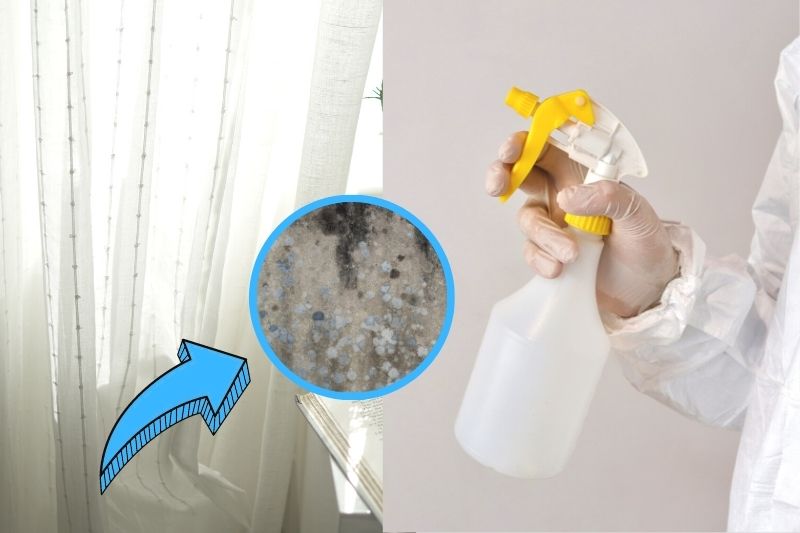
Mould loves damp and humid areas, and it just so happens that next to or near a window is the perfect spot for it to thrive in. And if that wasn’t bad enough, because windows are usually covered up with curtains, mould then likes to spread itself slowly and silently over this material.
Curtains are supposed to look clean and fresh, and when they do, they can really make a room. But when you’ve got mould riddled curtains, they usually lose their flare and colour. And they’re not that nice to look at, in general.
Throwing curtains out and buying new ones isn’t always an option, so how do you go about cleaning the mould off your curtains? Find out how to get mould off your curtains in our step-by-step guide. You’ll be surprised by how easy it is to rejuvenate them.

Bethan has a passion for exploring, reading, cooking and gardening! When she’s not creating culinary delights for her family, she’s concocting potions to keep her house clean!
